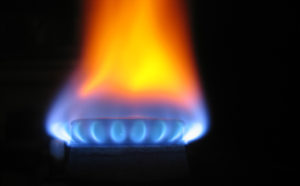 Natural gas rose back to positive daily territory half way through Tuesday but remained close to Mondays 8-1/2-month low as weather patterns across most of the US high-consuming states remained bearish. However, the current below-seasonal readings are expected to give way to a moderate warming in the second week of August, boosting cooling demand.
Natural gas rose back to positive daily territory half way through Tuesday but remained close to Mondays 8-1/2-month low as weather patterns across most of the US high-consuming states remained bearish. However, the current below-seasonal readings are expected to give way to a moderate warming in the second week of August, boosting cooling demand.
On the New York Mercantile Exchange, natural gas futures for settlement in September rose by 0.40% to a daily high $3.780 per million British thermal units by 11:54 GMT. Earlier, prices slid to a daily low of $3.744, close to Mondays 8-1/2-month low of $3.725. The power-plant fuel fell by 0.58% on Monday to settle at $3.765, a second consecutive daily decline.
Futures remained pressured to the downside amid weather forecasters calling for mild weather across most of the US high-consuming areas within the next ten days.
According to NatGasWeather.coms forecast for the July 29 – August 4 period, reinforcing cool blasts will follow throughout the week, ensuring comfortable below-seasonal readings and much lower-than-usual cooling demand over many parts of the country during the weekend. As the cooler weather pushes deep into Texas and the Southeast, the EIA is set to report a yet another larger-than-average weekly build in nationwide US natural gas inventories for the week ended July 25th.
Cooling demand during the next seven days is expected to be lower-than-normal over most of the US, apart from the western and southernmost areas of the country where the persisting hot weather will drive strong cooling demand.
In the 8 – 14 day time span, NatGasWeather.com expects temperatures over the eastern and central US to remain below-average for the first several days of the period, before giving way to warmer weather. Hot conditions are expected to extend from the West into the South, boosting cooling demand to moderate on national levels and locally high. However, excessively hot conditions are not expected to occur as cool Canadian weather systems are expected to try and push into the US around the middle of August. Nevertheless, the expected warming in the southern and southeastern states will support prices to the upside.
According to AccuWeather.com, the high in New York on August 1st will be 80 degrees Fahrenheit, compared to the average of 84. A follow-up warming will push readings to seasonal on August 8th, before easing back to mostly below-normal through the end of August. In Detroit, temperatures will peak at 81 degrees Fahrenheit on August 2nd, 1 beneath the average, before surging to as much as 85 degrees on August 5th, compared to the normal level of 82 degrees. Readings are then expected to remain slightly below-usual through the end of the month, with an exception of several single days when Detroit will see seasonal or little-above-seasonal temperatures.
To the South, the high in Texas City on August 2nd will be 89 degrees Fahrenheit, compared to the average of 90 degrees, following 4 straight days dominated by rains and thunderstorms. High readings are expected to drop to as much as 81 degrees on August 7th, 9 below average, followed by a gradual warm-up to as much as 93 degrees on August 17th, 3 degrees above usual. On the West Coast, readings in Los Angeles will be above normal through August 2nd, when the high will be at 86 degrees, 2 above usual. Overall seasonal or little-below-seasonal readings are expected to follow up through August 10th, before jumping back above normal levels.
US inventories
Last Thursday, the Energy Information Administration reported that US natural gas inventories rose by 90 billion cubic feet in the week through July 18th, exceeding the five-year average gain by 44 bcf. This was the fourteenth consecutive above-average build. Stocks were 20.2% below last year’s reading for the respective week. Natural-gas market analysts at NatGasWeather.com expect this week’s EIA data to show a build near or little over 90 billion cubic feet, again well above the five-year average.
The EIA had predicted that marketed gas production will jump by 4.1% in 2014 to 73.08 bcf per day, hitting an all-time high for a fourth consecutive year. At the same time, according to the Edison Electric Institute, output from electricity generators, the fuel’s biggest consumer, declined by 11% in the week ended July 19th from a year earlier. This was the lowest for this time of the year since 2001.
Technical view
According to Binary Tribune’s daily analysis, in case natural gas for settlement in September penetrates the first resistance level at $3.840 per million British thermal units, it will encounter next resistance at $3.914. If breached, upside movement will probably attempt to advance to $3.972 per mBtu.
If the energy source drops below its first resistance level at $3.708 per mBtu, it will see support at $3.650. If the second key support zone is breached, the power-station fuel’s downward movement may extend to $3.576 per mBtu.





